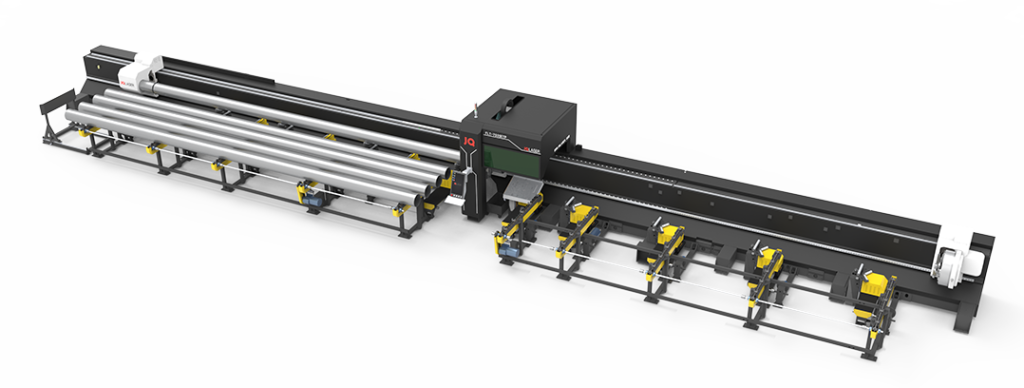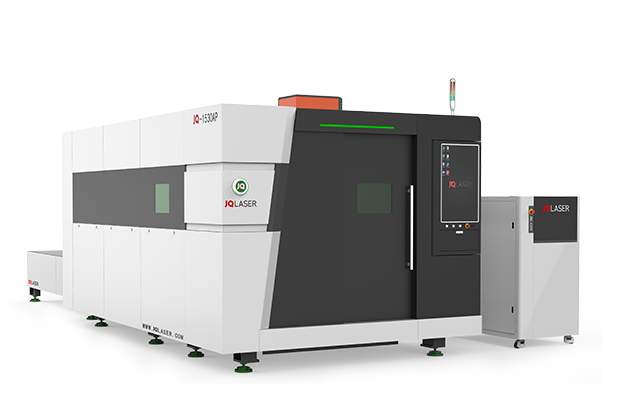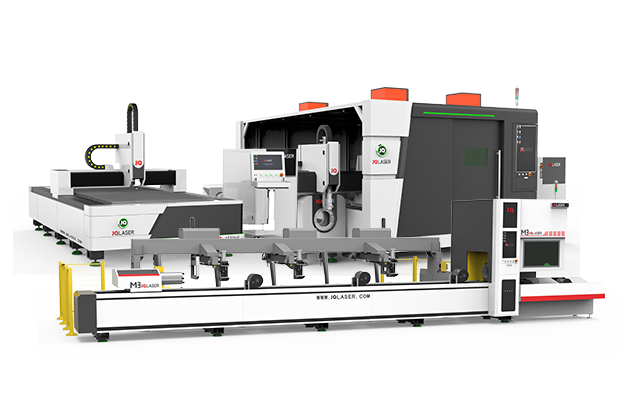Introduction
Laser cutting and plasma cutting are two of the most common industrial cutting methods used in the manufacturing industry. Both processes are used to cut through a variety of materials, including metal, plastic, and even wood. While both methods have their advantages, many experts agree that laser cutting is more efficient than plasma cutting. This is due to the higher precision and accuracy of laser cutting, as well as its ability to cut through thicker materials with ease. Additionally, laser cutting requires less energy and has a much lower environmental impact than plasma cutting. In this article, we will discuss why laser cutting is more efficient than plasma cutting and the advantages that it offers.
The Benefits of Laser Cutting over Plasma Cutting
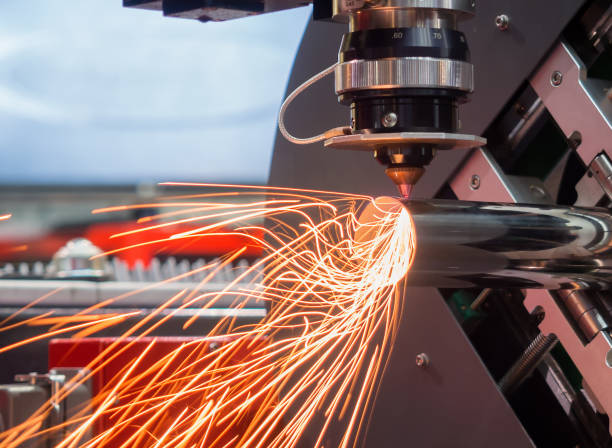
Laser cutting is a process that uses a focused beam of light to cut out materials in a precise and efficient manner. This process has become increasingly popular in the manufacturing and engineering industries due to its many advantages over traditional plasma cutting. Laser cutting offers a higher degree of accuracy and precision, as well as a faster production time and a variety of materials that can be cut.
The laser cutting process begins with a highly focused beam of light, usually generated by a CO2 laser. This laser is used to cut into the material, creating an intricate cut with great precision. The beam of light is able to move quickly and accurately, making it perfect for cutting complex shapes and intricate details. For certain materials, the beam of light can also be used to create a smooth, polished finish.
One of the biggest advantages of laser cutting over plasma cutting is its precision. Laser cutting produces much more precise cuts than other methods, and the beam of light is able to move quickly and accurately, allowing for intricate cuts that are impossible with other methods. This makes laser cutting ideal for manufacturing products with tight tolerances, as it ensures that the finished product is of the highest quality.
In addition to its superior accuracy, laser cutting also offers a significantly faster production time. The beam of light is able to move quickly, allowing for more cuts to be made in a shorter amount of time. This makes laser cutting ideal for production runs that require a high volume of parts to be produced quickly.
Finally, laser cutting is able to cut a wide variety of materials, including metal, plastic, wood, and glass. This makes it an ideal choice for a number of different manufacturing processes.
How Laser Cutting Enhances Efficiency for Manufacturers
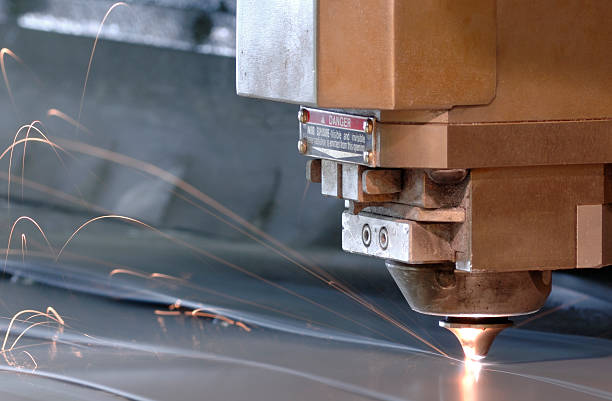
Laser cutting is a manufacturing process that uses a powerful laser beam to cut materials, usually metals, into specific shapes and sizes. It is a highly efficient and precise method of production, offering a wide range of advantages over traditional cutting techniques.
One of the primary benefits of laser cutting is its accuracy. The laser beam is focused and directed with extreme precision and can cut the material along exact dimensions. This eliminates the need for manual cutting, which can be labor intensive and less precise. Additionally, laser cutting can be programmed to create complex shapes and intricate details, and can produce multiple copies of the same part quickly and consistently.
The speed of laser cutting is another major advantage. Laser cutting machines can operate at high speeds and can typically cut parts in a fraction of the time it would take with traditional cutting methods. This increases production efficiency and can significantly reduce turnaround time for manufacturing jobs.
The level of detail achievable with laser cutting is also impressive. The beam is small, allowing for cuts with tight tolerances and fine finishing details. This ensures that parts produced with laser cutting will meet exact specifications and have a professional, high-quality finish.
Finally, laser cutting is a relatively clean process with minimal waste. The heat generated by the laser beam melts and vaporizes the material during the cutting process, leaving behind a minimal amount of debris. This reduces cleanup time and minimizes waste, making the process more cost-effective.
Exploring the Cost Savings of Laser Cutting vs. Plasma Cutting
The cost savings associated with laser cutting versus plasma cutting are numerous and worth exploring for any business looking to maximize their production capabilities and reduce overall costs. In general, laser cutting offers a more precise cut than plasma cutting, which in turn can reduce material waste and lead to significant cost savings.
Laser cutting relies on a focused beam of light to cut through materials, while plasma cutting uses a high-velocity stream of hot gas. Laser cutting is capable of cutting both thicker and thinner materials than plasma cutting, and is also able to produce higher quality cuts with less burr. The accuracy of laser cutting is also much higher than plasma cutting, meaning that less material waste is generated and less time is required to make adjustments or repairs.
Additionally, laser cutting is much faster than plasma cutting, meaning it can increase production speed and throughput. This can lead to a decrease in labor costs and an increase in overall efficiency. Laser cutting also requires less maintenance than plasma cutting, meaning that the total cost of ownership over time is much lower.
When considering the cost savings of laser cutting versus plasma cutting, it is important to factor in the upfront cost of laser cutting machines. While the initial cost may be higher, the long-term cost savings associated with fewer material costs, less labor costs, and less maintenance costs make laser cutting a more cost effective option over time.
Overall, laser cutting offers numerous cost savings compared to plasma cutting, including reduced material costs, increased production speed, and less maintenance costs. For businesses looking to maximize their production capabilities and reduce costs, investing in laser cutting technology is a wise choice.
Comparing Laser Cutting and Plasma Cutting: Which is Best for Your Project?
When choosing which method to use for a particular project, it is important to consider the thickness of the material being cut and the accuracy required. If a high degree of accuracy is needed, then laser cutting is the better option. However, if speed and thicker materials are the main considerations, then plasma cutting is often the better choice.
In conclusion, laser cutting and plasma cutting are both useful methods of cutting materials. The best method of cutting for a particular project depends on the thickness of the material and the accuracy required. Laser cutting is the better choice for precise, thin materials, while plasma cutting is better for speed and thicker materials.
Conclusion
In conclusion, laser cutting is more efficient than plasma cutting due to its greater precision and accuracy, faster speed, and overall better quality of cuts. It also produces less waste, requires less energy, and has less environmental impact. For these reasons, laser cutting is the preferred method for many industrial fabrication and manufacturing applications.

